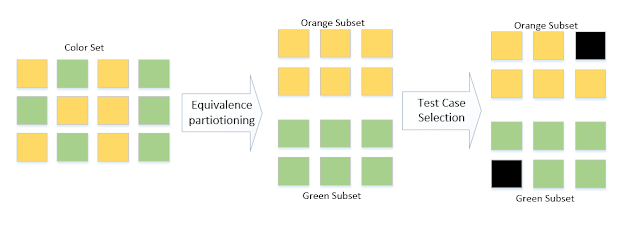Let start from definition, per ISTQB glossary:
Inputs, outputs, internal values and time-related values should be split into equivalent groups, where values on boundaries and inside of group will lead to the same result.
Each equivalence partition should be tested with valid and invalid values at least once. Multiple values for a single partition doesn't increase the coverage percentage.
Benefits: number of tests significantly descrise
Data set was split into 2 subset with selection of test case of each subset
Data set was split into 2 major subsets and 2 subsets of one of major subsets
Difficulties which can be faced: participation was identified incorrectly. That could mean that invalid values accepted or valid values rejected by the system.
Avoid errors:
a. Subsets shouldn't have a common elements. Each sub set should have unique data elements
b. Subsets shouldn't be empty. Element should exists in data set
c. Subsets union should be equivalent to original set
Types of defect: functional defects
Equivalence partitioning: a black-box test design technique in which test cases are designed to execute representative from equivalence partitions. In principle, test cases are designed to cover each partition at least once.What does it mean?
Inputs, outputs, internal values and time-related values should be split into equivalent groups, where values on boundaries and inside of group will lead to the same result.
Each equivalence partition should be tested with valid and invalid values at least once. Multiple values for a single partition doesn't increase the coverage percentage.
Benefits: number of tests significantly descrise
Data set was split into 2 subset with selection of test case of each subset
Data set was split into 2 major subsets and 2 subsets of one of major subsets
Difficulties which can be faced: participation was identified incorrectly. That could mean that invalid values accepted or valid values rejected by the system.
Avoid errors:
a. Subsets shouldn't have a common elements. Each sub set should have unique data elements
b. Subsets shouldn't be empty. Element should exists in data set
c. Subsets union should be equivalent to original set
Types of defect: functional defects

